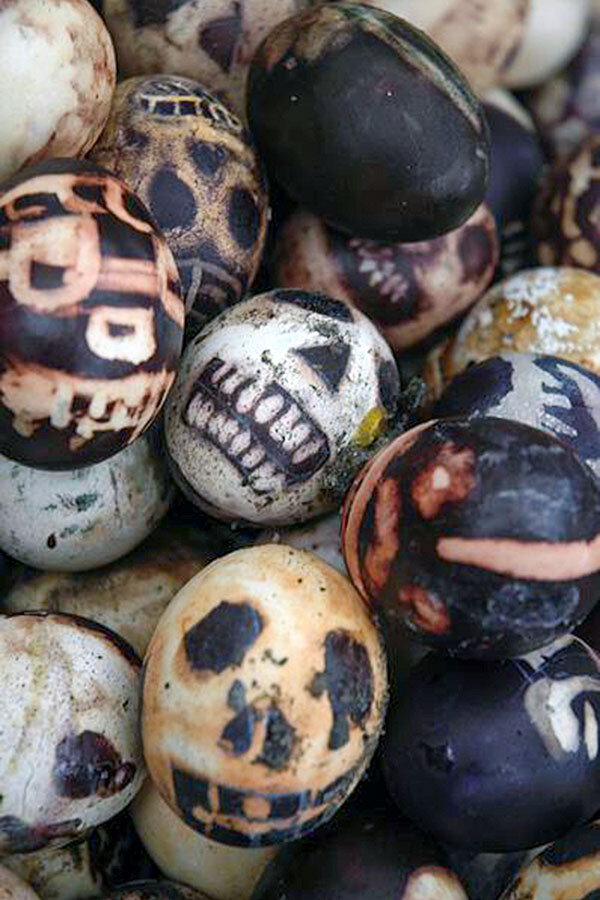Projects
CONCESSION STAND
Merriam-Webster tells us that a ‘concession’ is something that is granted (conceded), an admission, that it notes in definition 2.b. “...is done or agreed to usually grudgingly in order to reach an agreement or improve a situation.” It notes in 2.c(1) that a concession is also “a grant of land or property especially by a government in return for services or for a particular use...” In light of the proposed demolition of the Herring Cove Bathhouse, “Concession Stand” is an installation designed to acknowledge how these two definitions are operating simultaneously within the “10DaysOfART” exhibit.
Conceding that the forces of nature are too much to withstand, the National Seashore has planned the destruction of buildings that are beloved to many, even in their derelict state. Conceding this fact, we take a stand and celebrate this inevitable loss with a torn tape painting will wrap the exterior of the Concession Stand to commemorate the happy memories that its use brought so many in the Summer The torn tape imagery will act as a resist against the application of another color, as we resist the loss of memories contained in the buildings slated for demolition. The process mimics the process of wax design in batik, as the image is created with drawn wax (torn tape in this case), which is removed after color is applied. Loss is inherent in the process of the art-making, reflecting how the loss of beach to erosion is inherent in the cycles of nature.
BIG EGG HUNT
In 2014 I partnered with The Fabergé Big Egg Hunt, an innovative and engaging fundraising initiative that saw over 250 large egg sculptures – each designed by globally renowned artists, designers and creatives - placed throughout New York City’s five boroughs.
The general public was encouraged to participate by finding all of the eggs, with incredible gemstone prizes from Fabergé serving as an incentive. The Fabergé Big Egg Hunt culminated with a spectacular auction of the collectible and one-of-a-kind egg sculptures, held by Sotheby’s. The 2014 hunt in New York benefited both Elephant Family and Studio in a School.
COUTURE DE LA MARINE DEBRIS
Marine Debris, otherwise known as Common Beach Trash is a Happy Hooker who loves this Planet but HATES the Flotsam & Jetsam that washes ashore on her little Patch of Paradise known as Provincetown sur le Mer! As she cruises these Sunny Shores, she gathers this trash & twirls it into Haute Chapeau Couture 4 Your Delight & to show off how much YOU Love this Planet & its pristine Plages where we Cavort & Play & While away a Summer's Day!
THE SKULL PROJECT
The Skull Project was a public art ritual in 2004 designed to commemorate everyone killed during the Iraq war. The public was invited to participate in the creation of skull eggs, which are a symbolic representation of the lives lost during that conflict. The skull eggs were meant to create a visual manifestation of these deaths – which, under pressure from the Bush administration, only appeared in our media as statistics.
The Skull Project asked each participant to paint the universal symbol of death (skull) on the universal symbol of new life (egg). This fusion created a paradox while it simultaneously satisfied the intention to commemorate. It is an in-between state, the place between life and death, which parallels our roles as participants in a democratic nation that had initiated a war many of us did not want.
The Skull Project enjoined each participant in a communal public ritual of understanding - of our civic interconnections and our responsibilities as citizens. The public was invited to meditate on the outcome of continued warfare by connecting casualty figures with a visual representation. Recognizing that these deaths had happened is the first step in investigating our communal responsibility for actions taken by our government that may not have had our consent.
The Skull Project first took place 11 October – 2 November 2004 in the cemetery yard at St. Mark’s Church-in-the-Bowery in New York City. During this time the public was invited to mound the skulls eggs into piles separated by nationality, as crossing national boundaries without consent is the essential act of making war. In three weeks, approximately 1059 individuals created 1500 skull eggs.
One visual feature of The Skull Project was that each person who participated created a skull egg that is unique to their own hand. Even if a participant is making more than one, each skull egg tends to be visually distinct. The resulting mound looks liked a pile of individuals, each skull egg as unique as the life lost it is meant to commemorate.
















